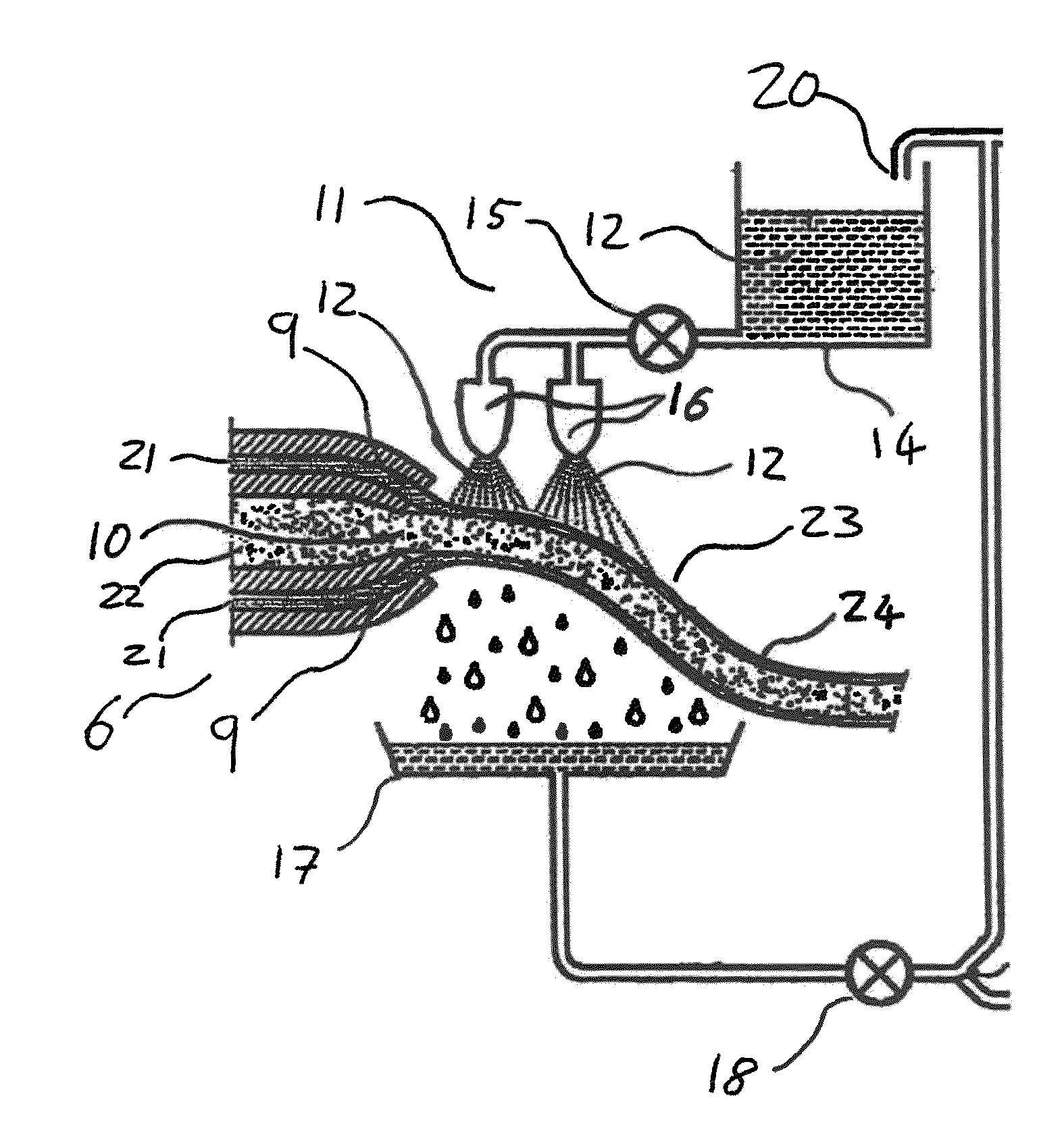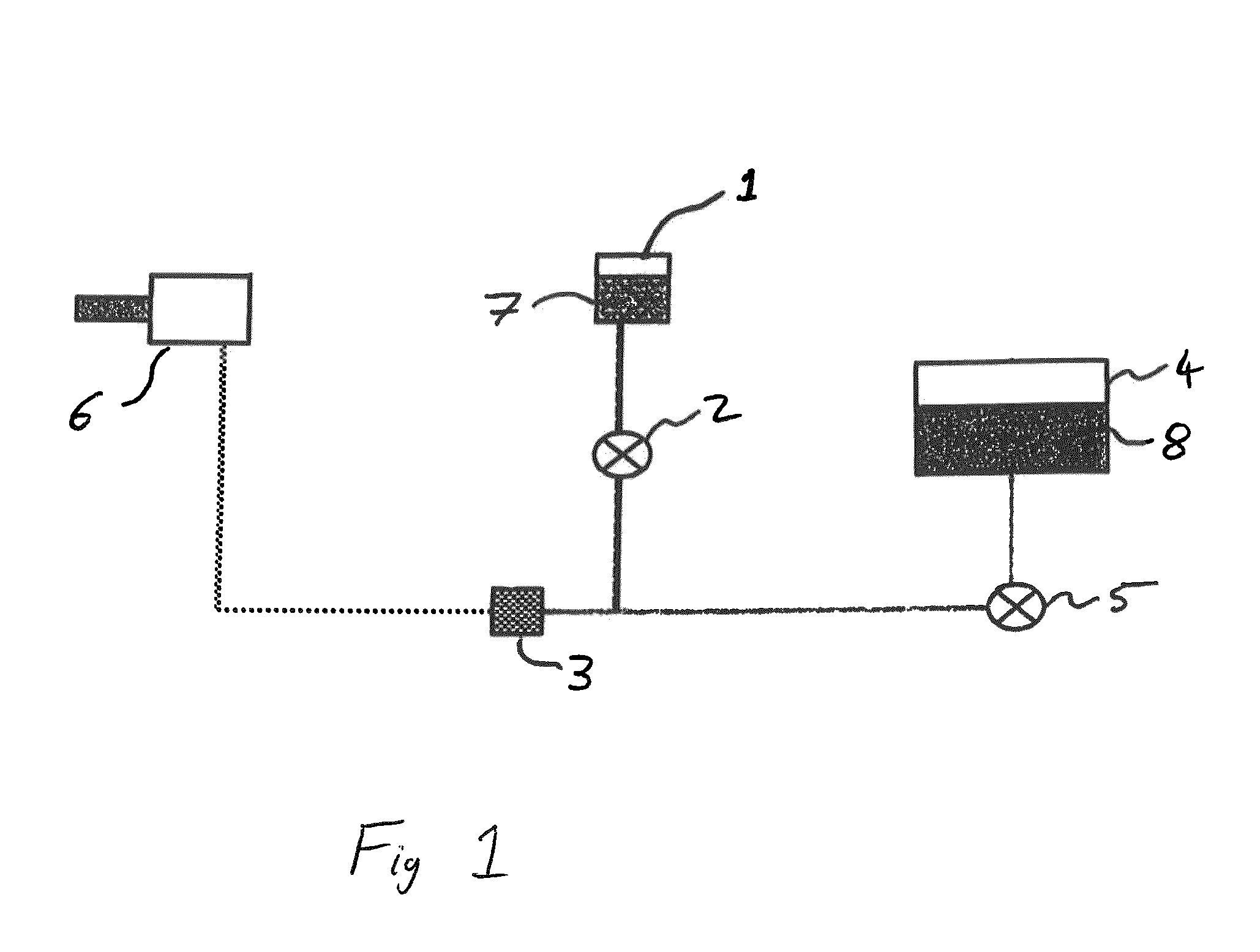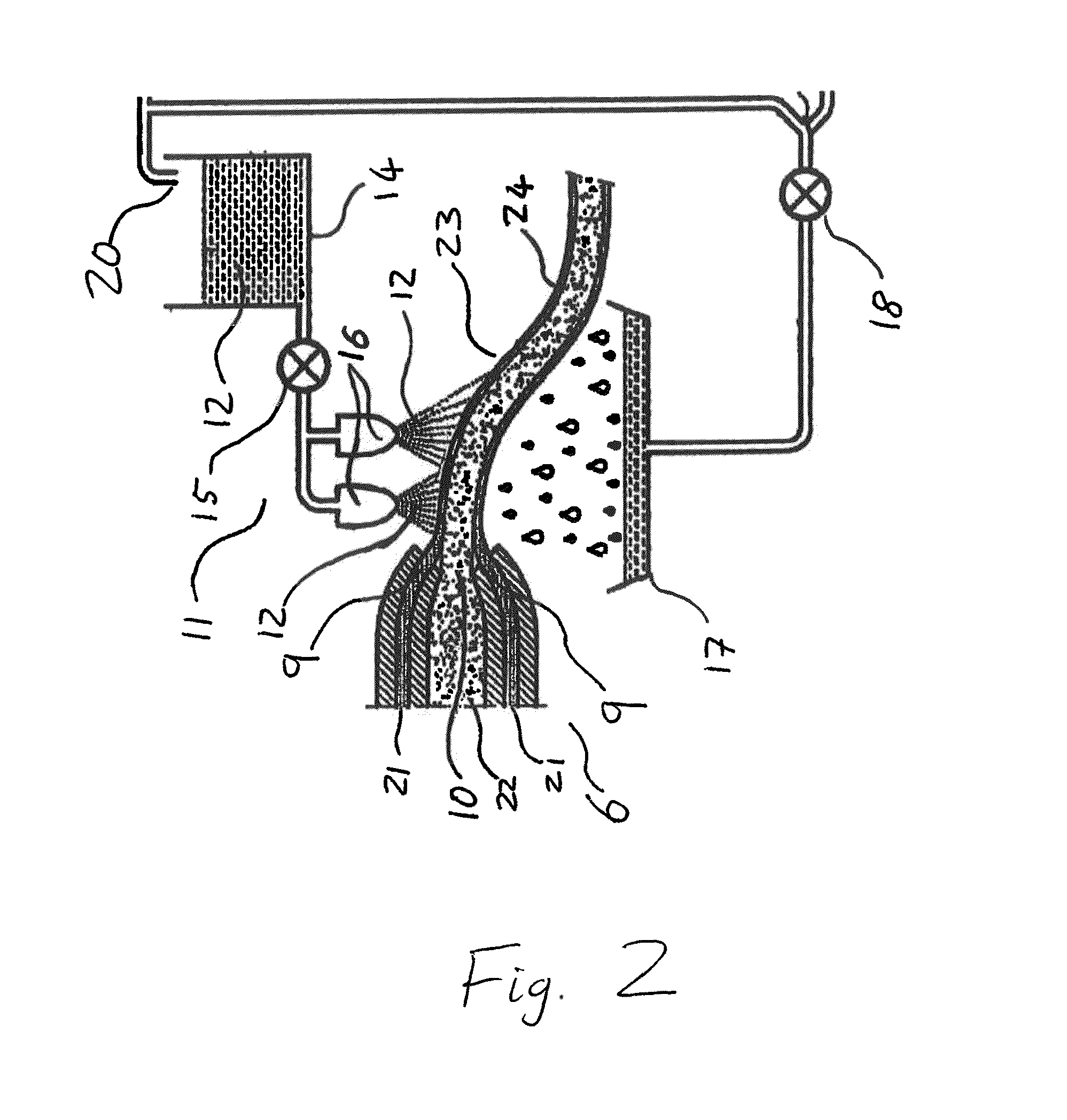Food product having a casing
a technology of food products and casings, applied in the field of food products having casings, can solve the problems of weakening of the casings, and achieve the effect of less prone to weakening over tim
- Summary
- Abstract
- Description
- Claims
- Application Information
AI Technical Summary
Benefits of technology
Problems solved by technology
Method used
Image
Examples
examples
[0066]Further embodiments of the invention will now be described by way of example.
example a
[0067]A meat dough was prepared with the following composition:
[0068]
Pork Shoulder24.0% Pork Belly46.8% Water18.5% Rusk5.0%Soya isolate2.0%Salt2.0%Spices0.26% Sodium Ascorbate0.04% Sugar0.4%Dextrose0.5%Phosphates0.5%Total100%
[0069]The dough was prepared using the following steps:[0070]Grind all the meats through a 4 mm plate.[0071]Add ground meat-materials plus the water and the dry ingredients (without the rusk) to bowl-chopper.[0072]Blend the mixture with the knives on low reversed speed for 2-3 minutes.[0073]Add the rusk.[0074]Bowl-chop one or two rounds with the knives at low speed.[0075]Blend the mixture with the knives on low reversed speed for 2-3 of minutes.
[0076]A slurry of calcium sulphate di-hydrate and tetra sodium pyrophosphate was made in vegetable oil in the ratio 2 parts calcium sulphate di-hydrate: 1 part tetra sodium pyrophosphate: 3 parts vegetable oil by weight using a propeller stirrer.
[0077]A paste according to the preferred ranges of concentration described i...
example b
[0079]A slurry of calcium sulphate di-hydrate and water was made in the ratio 1:2. Guar gum was added to a concentration of 0.5% in the slurry in order to stabilize the slurry.
[0080]A meat dough similar to the one described under example A was prepared, and a paste was prepared as described under example A containing sodium alginate, guar gum, modified starch, skimmed milk powder and sodium polyphosphate. Furthermore, vegetable oil was added to the water in the bowl chopper before adding the above powder blend. The vegetable oil caused the gel to become opaque and so more similar to the appearance of a natural casing.
[0081]Sausages (length: 100 mm; diameter: 25 mm, weight: 50 grams) were produced using a commercial QX co-extruder machine from Stork Townsend B.V. (NL) using the following settings: Meat pump 18 rpm, paste pump: 50 rpm, in-line mixing: 0.75%-4.5% of slurry mixed into the paste. The level of casing on the sausages was 5%. The sausage string was initially sprayed with 7....
PUM
 Login to View More
Login to View More Abstract
Description
Claims
Application Information
 Login to View More
Login to View More - R&D
- Intellectual Property
- Life Sciences
- Materials
- Tech Scout
- Unparalleled Data Quality
- Higher Quality Content
- 60% Fewer Hallucinations
Browse by: Latest US Patents, China's latest patents, Technical Efficacy Thesaurus, Application Domain, Technology Topic, Popular Technical Reports.
© 2025 PatSnap. All rights reserved.Legal|Privacy policy|Modern Slavery Act Transparency Statement|Sitemap|About US| Contact US: help@patsnap.com



